Product Categories
New Products
SRAM filed a new patent in October 2022 that details a new electronic rear dial that can charge itself while in use, without even needing a removable battery. The document describes the use of a generator that is coupled to the rear-dial transmission and can be activated by the rotation of the rear-dial up regulating wheel while pedaling to continuously charge the battery.
On-board energy harvesting systems will certainly reduce detachable battery failures, and it may become a new option for ultra-long distance endurance racers in the future, so they don't have to carry backup batteries. However, it is conceivable that the mechanism described would lead to an increase in the resistance of the drivetrain, thereby losing some kinetic energy, which would ultimately affect performance, as it is captured from the rotation of the upper guide wheel during the trampling process and then converted into electrical energy.
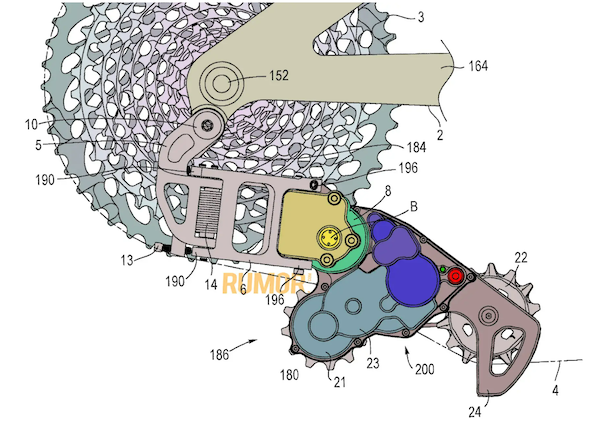
Mounting section (light gray), clutch and shift motor (yellow and green), generator (dark blue), generator transmission (light blue), AXS pairing button (red) and LED indicator (small green dot)
SRAM's self-charging rear chain switch concept
The patent (US 20220355900 A1) details a rear dial incorporating an energy harvesting system. The previous paragraphs mentioned one of the drawbacks of current electronic chain dippers: the inconvenience of recharging the battery and the inherent risk of running out of juice on long rides. Those lucky enough to own an electronic drivetrain know this all too well; Maybe not because they ran out of power during the trip, but more likely because they forgot to charge the battery before their next ride.
The new device eliminates this problem, meaning its owner no longer has to worry about charging the battery, or worrying about how much power it has.
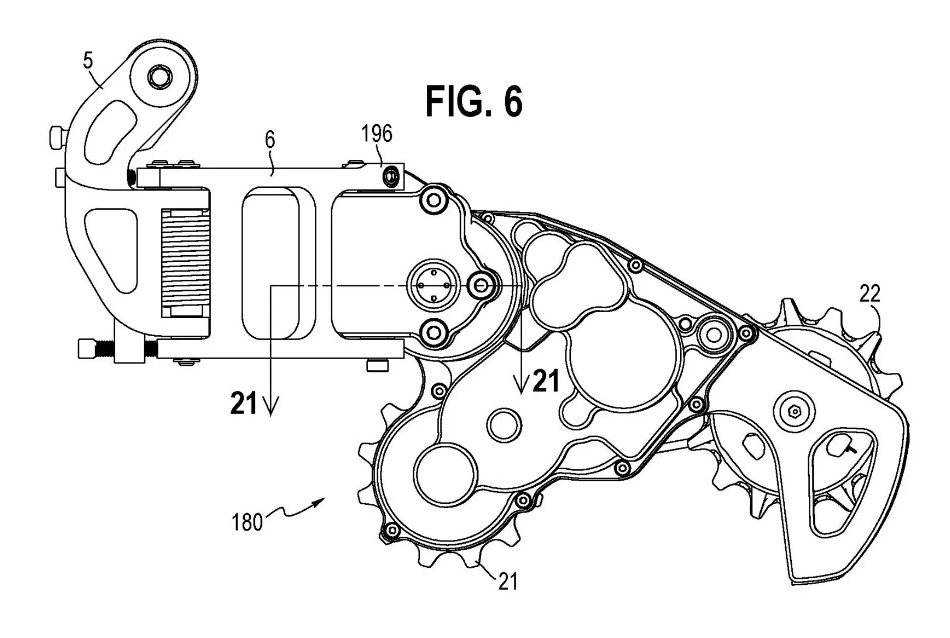
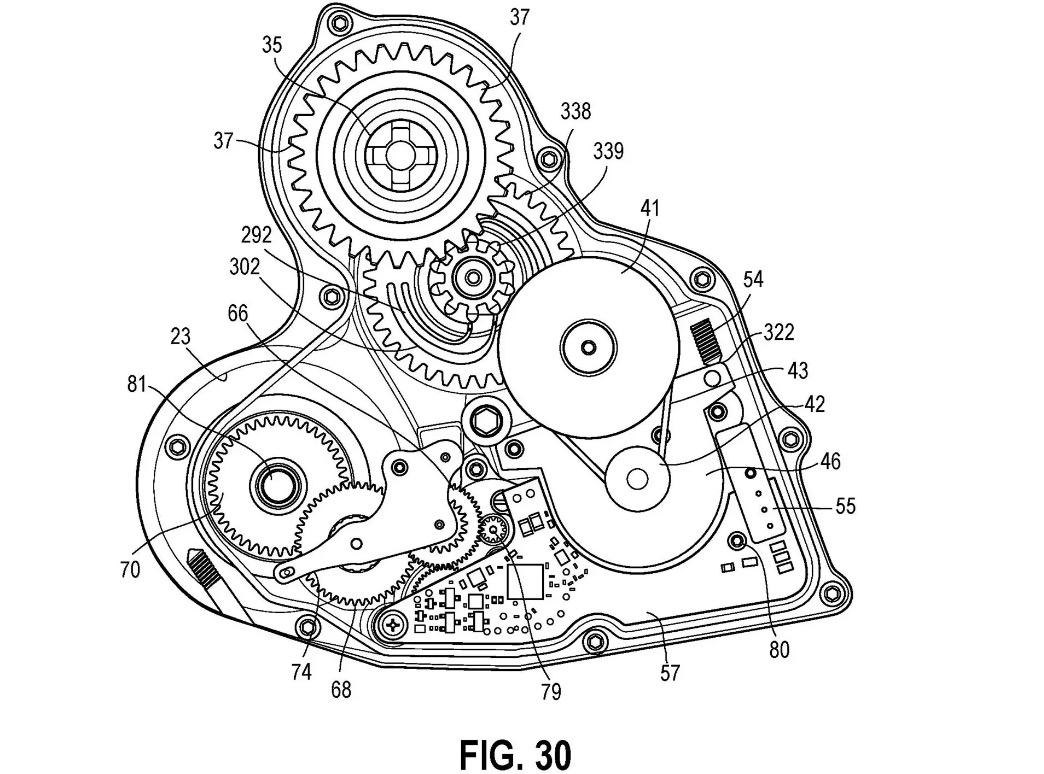 The primary mechanism is required to couple the upper gear of the rotating cage (through 35 in Figure 30) to drive the pinion to activate the generator. In the mechanism, the patent describes the use of spur gears (339), pinion gears (338), belts, and internal belt wheels (41) to activate the generator base (46), stating that the optimal selected gear ratio is 33.75:1. Thus, for every turn of the cage gear, the pinion in the generator system turns 33.75 times. This means that the generator is most efficient at high speeds.
The primary mechanism is required to couple the upper gear of the rotating cage (through 35 in Figure 30) to drive the pinion to activate the generator. In the mechanism, the patent describes the use of spur gears (339), pinion gears (338), belts, and internal belt wheels (41) to activate the generator base (46), stating that the optimal selected gear ratio is 33.75:1. Thus, for every turn of the cage gear, the pinion in the generator system turns 33.75 times. This means that the generator is most efficient at high speeds.
In this case, the driver's step on the crank inputs, actually a very small amount of power, to turn the generator. So it's reasonable to assume that by charging the battery in the rear-dial transmission while pedaling, you lose only a little of your precious power to the generator system. That is to say, we imagine much less loss than a larger wheel set of flower drum generators.
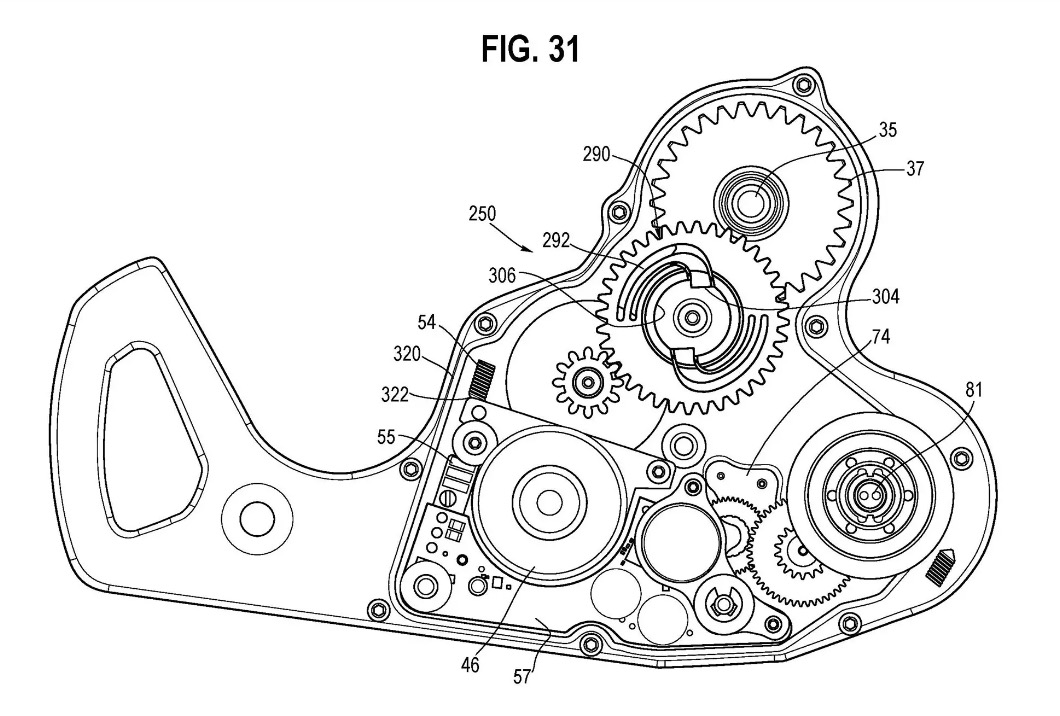
The patent also describes the use of a clutch (290) within the generator system, which prevents the gears from spinning when the rider reverses. Obviously, it's not that common. But in some full shock absorbance mountain bikes, due to the chain growth caused by the pedal recoil event, it will occasionally happen to varying degrees.
The 22-page patent details the use of transistors, resistors and capacitors. In part, the generator is a way to charge the battery in the rear-shift transmission so that, in theory, it never runs out of juice during the ride. This could be a game-changer for ultra-long distance endurance racers, who can't risk running out of power on their variable speed systems in a long-distance endurance race for fear of having to run faster before reaching the next refuelling point.
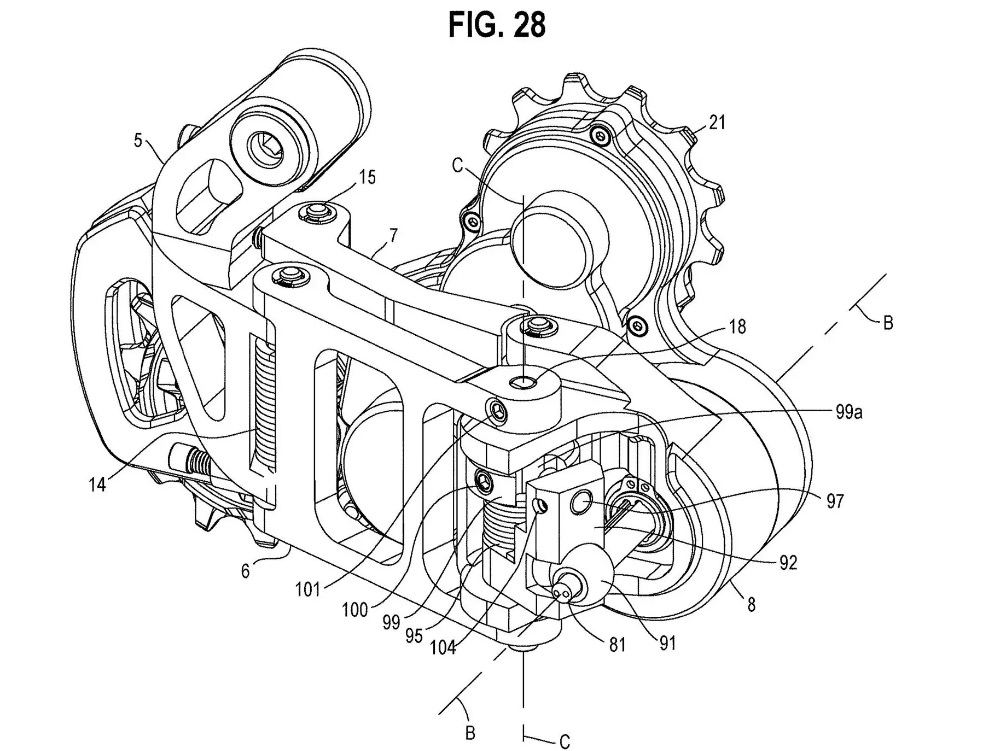
Figure 28 of the SRAM patent application also reveals a new variable speed mechanism. On the current SRAM AXS rear shifter, the transmission motor and battery are mounted on the rear B section of the rear shifter, between the rear pivot of the parallelogram linkage that regulates the shift. Here, on the new electronic self-charging rear-shift transmission concept, the rear-shift transmission's motor is mounted on the cage assembly, which in turn drives the pinion, spur gear, screw (81), nut (91), and finally drive pin (97) to rotate the parallelogram's outer connecting rod (6) to perform the shift. To our shock, many of the important (and possibly expensive) components are located in the more vulnerable part of the chain shifter: the guide plate. Nevertheless, the patent document states, "The motor and/or generator system may be mounted on and moved with the guide plate. If damage occurs, the guide plate as a whole, including the motor and generator system, can be replaced quickly and easily without the need to replace other parts of the transmission."
When in the small tooth ratio/large tooth ratio, the larger mechanism in the guide plate does protrude quite far, where the rear dial transmission hanger screws touch your frame (under 15). But when you switch to an easier gear/larger tooth ratio, the rear-dial transmission does seem to be hidden under the rear lower fork, close to the wheel set.
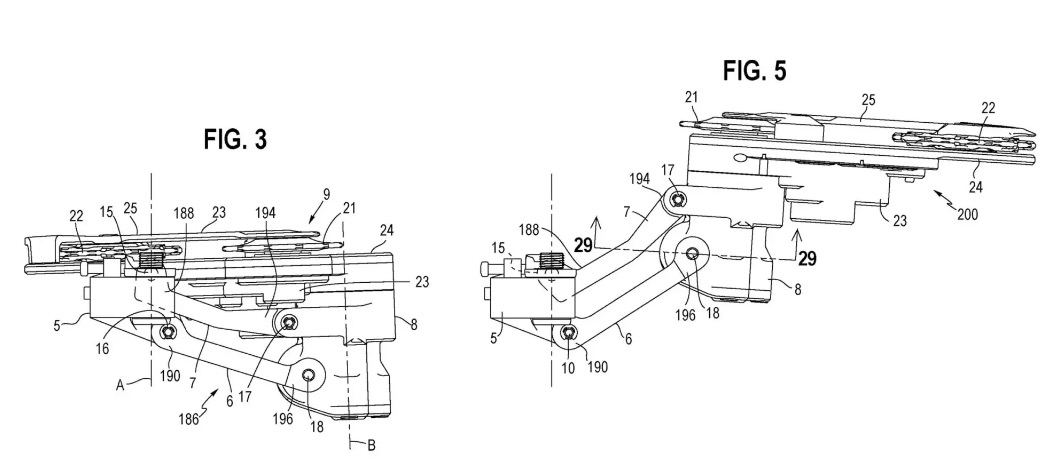
Figure 3 shows that the rear-shift transmission is positioned at the smaller teeth for servicing the card flywheel, while Figure 5 shows that it is positioned at the larger teeth, which is an absolutely unparallel mode of motion but is better aligned with the bicycle chain Angle
Finally, an automatic shift feature is introduced. The diodes and resistors in the generator system are used to sense the speed of the generator, which can then be used to determine the speed of the chain through the regulating wheel, thus determining the speed of the chain. This information, along with information from other sensors on the bike, such as those on the cranks and rear wheels, can be used to perform automatic shifting algorithms that keep the gear ratio at a ratio favorable to the rider.